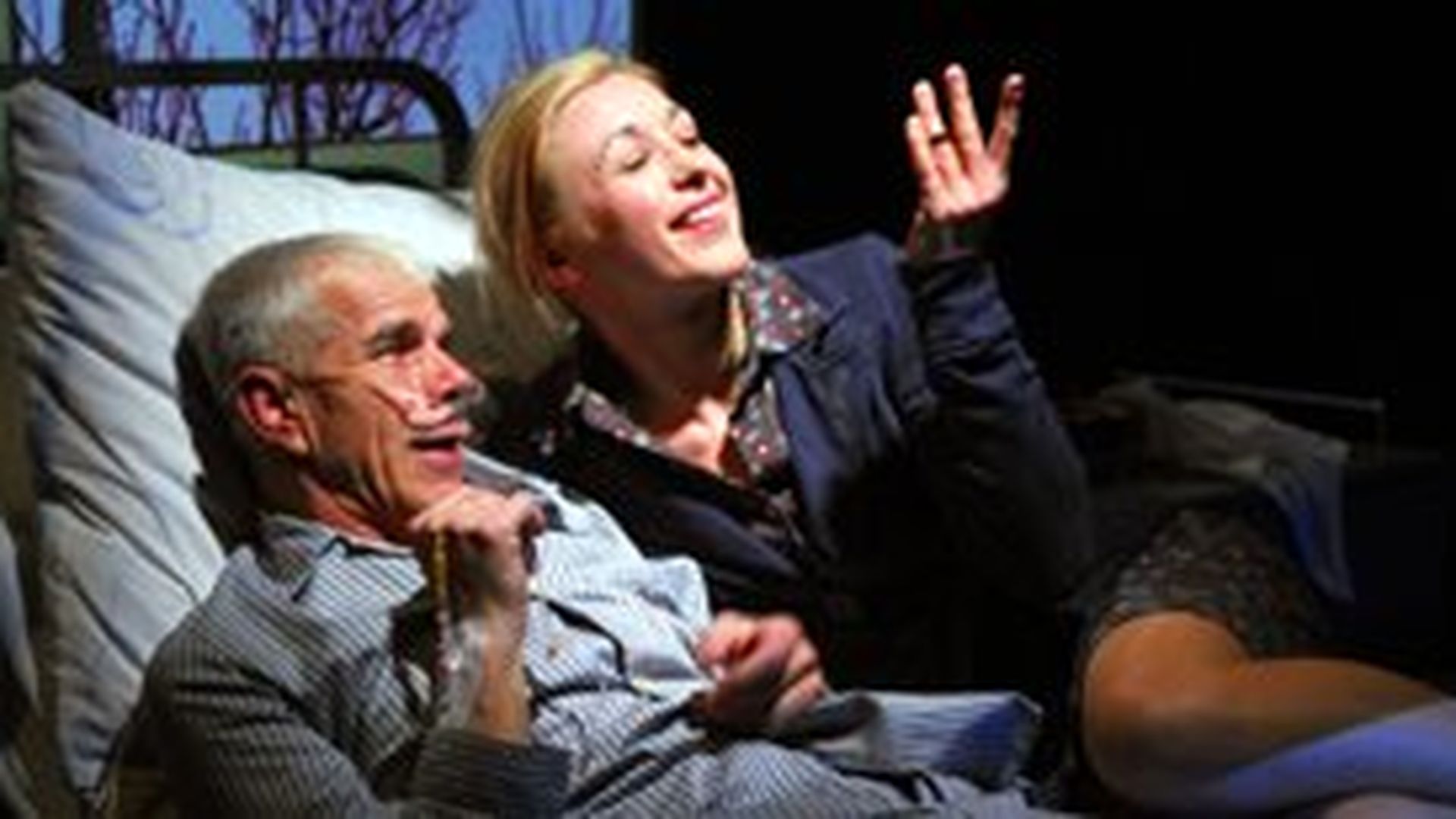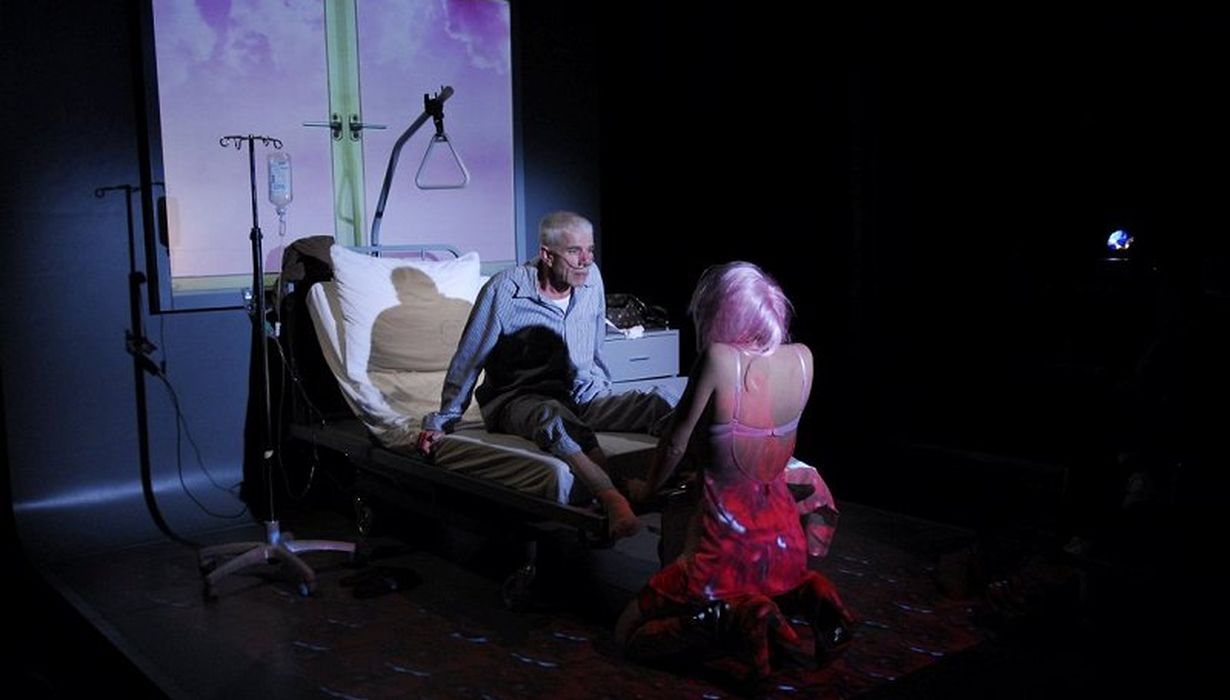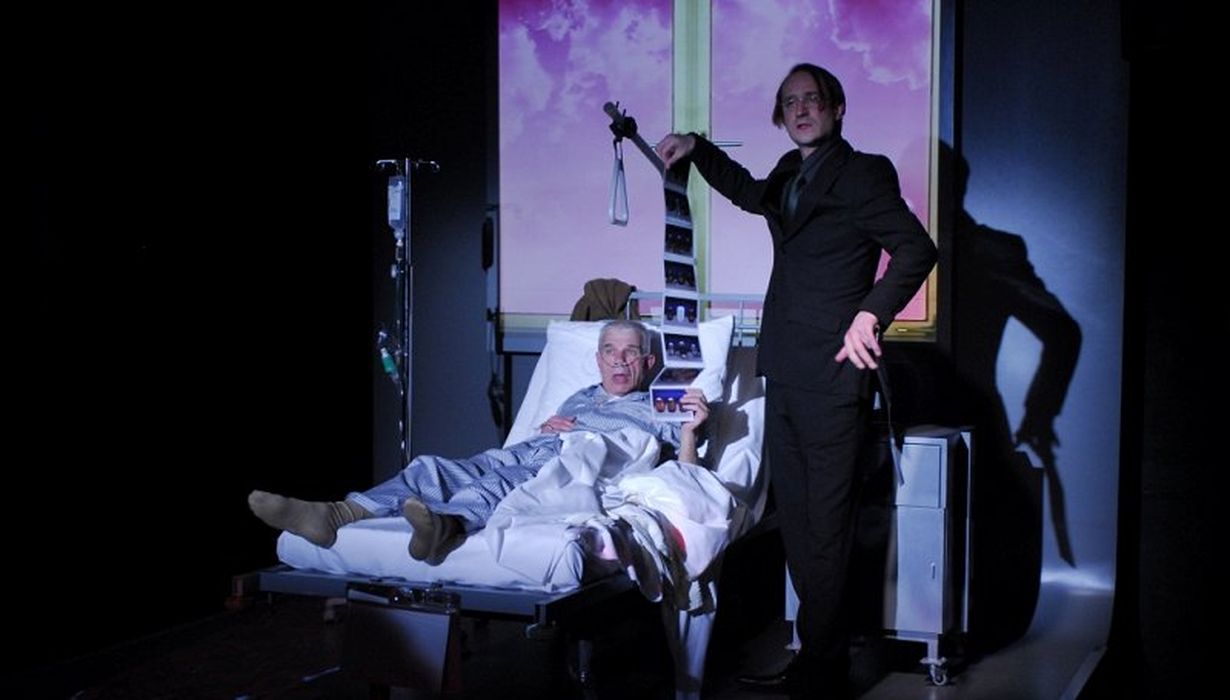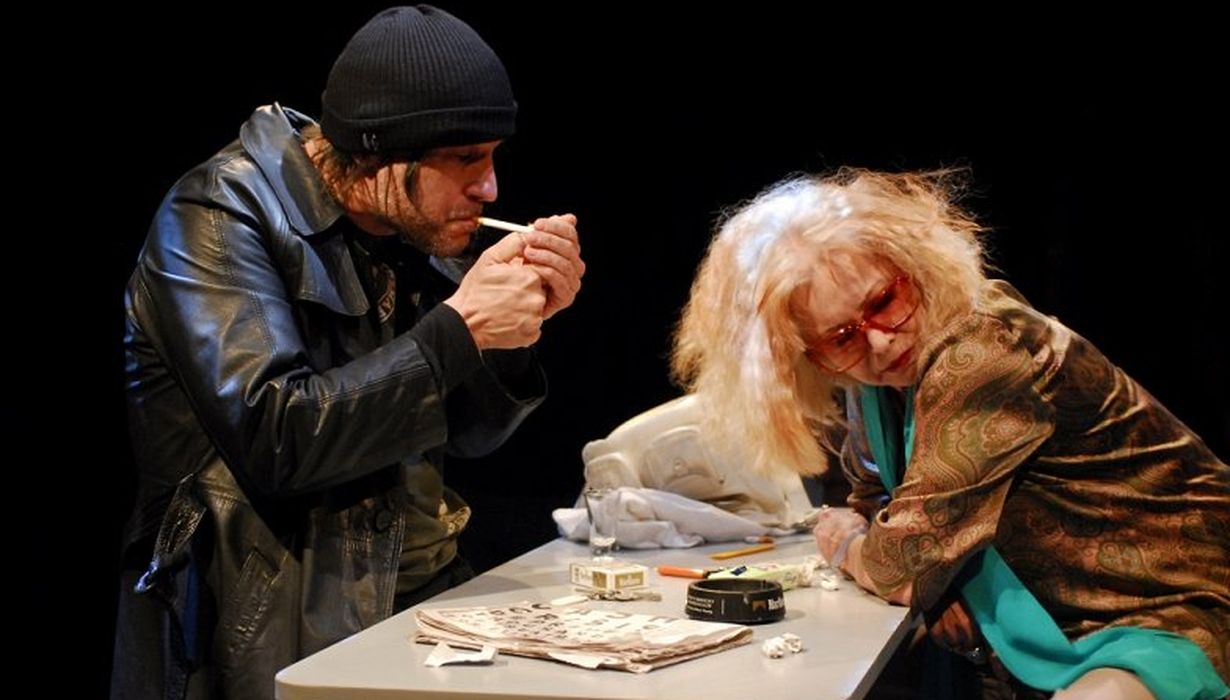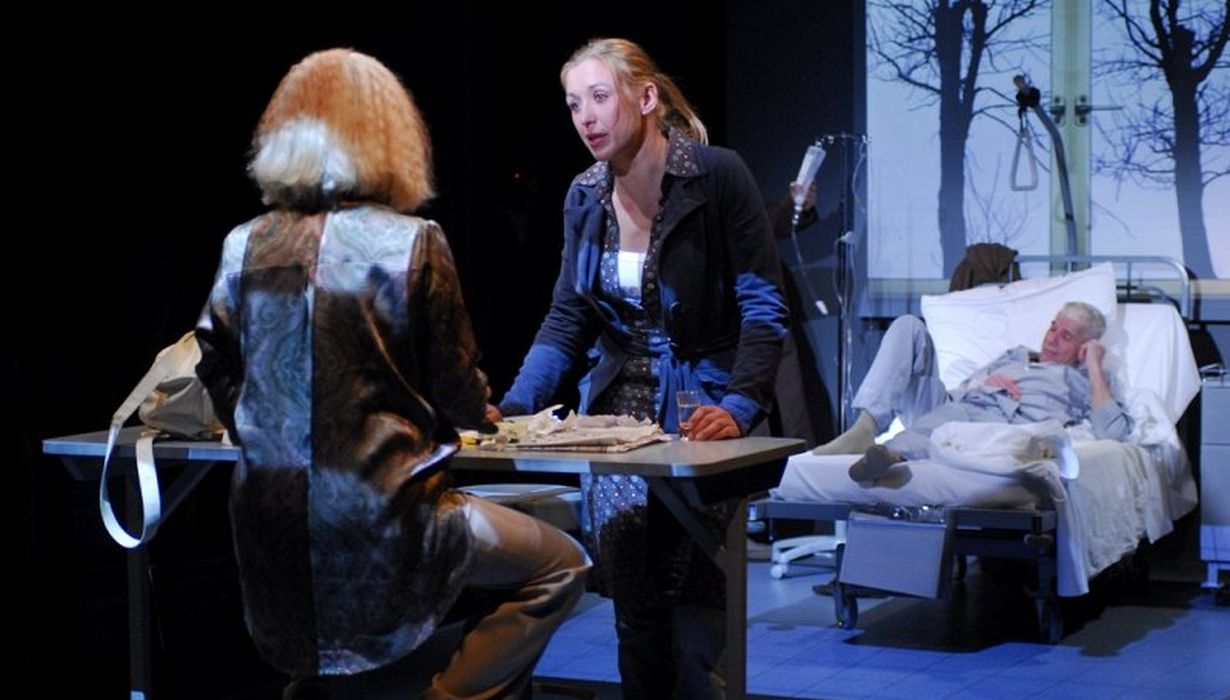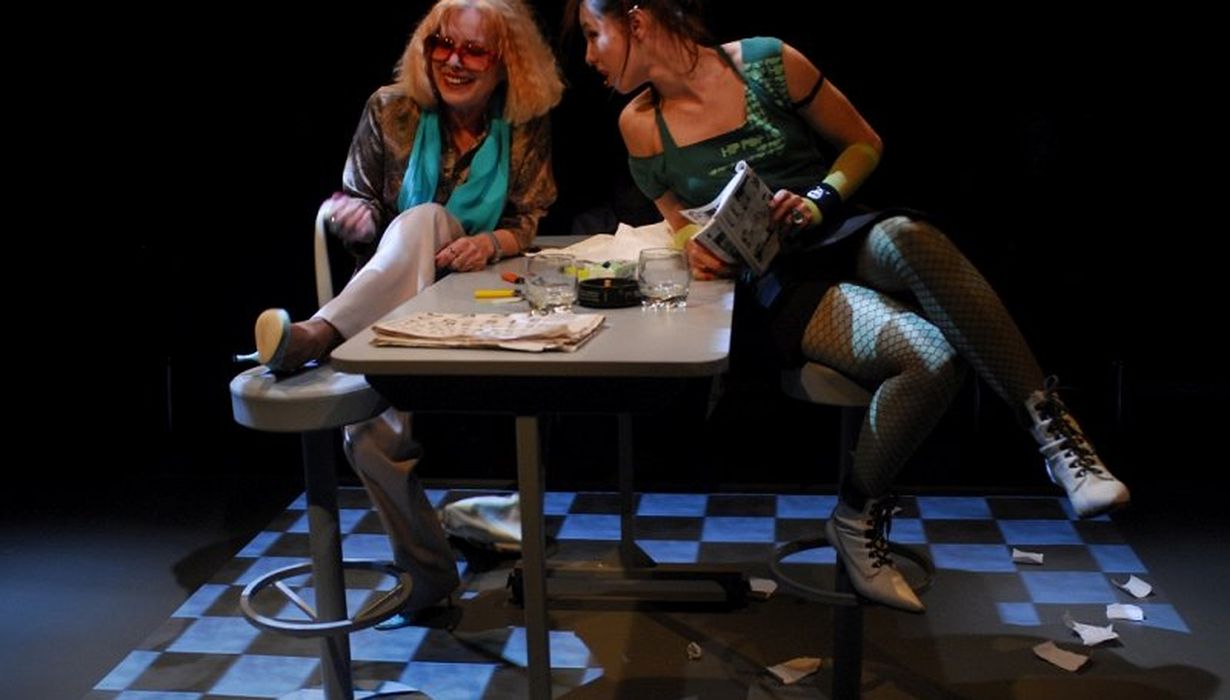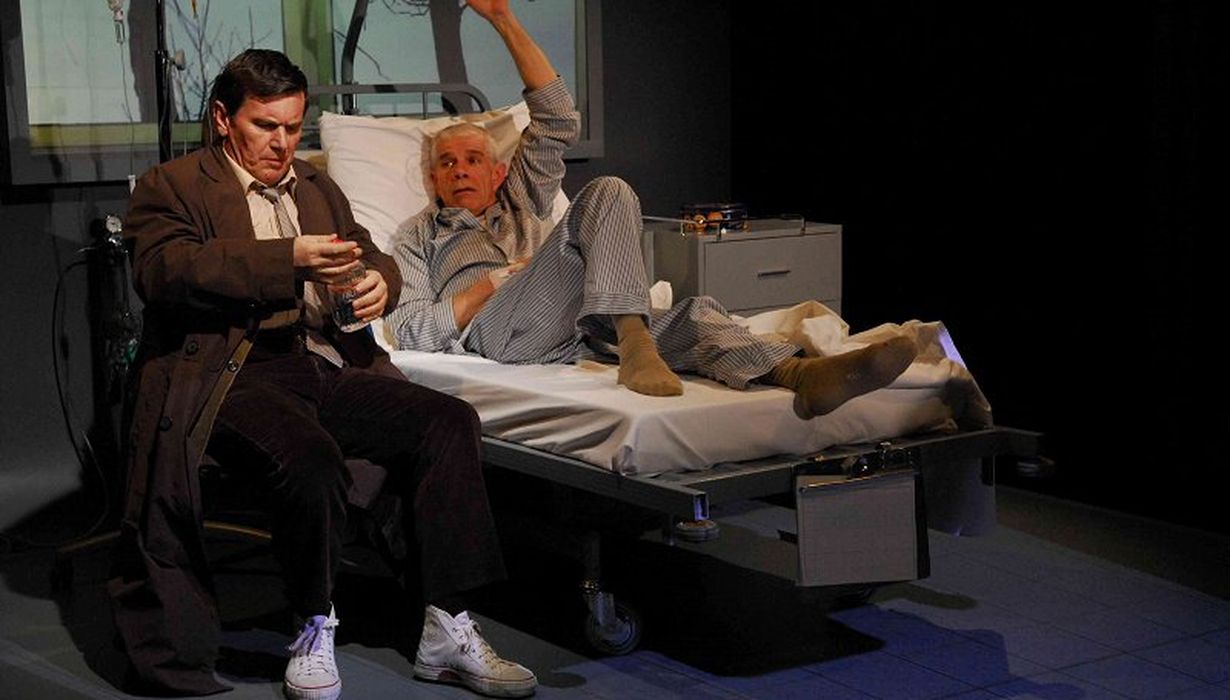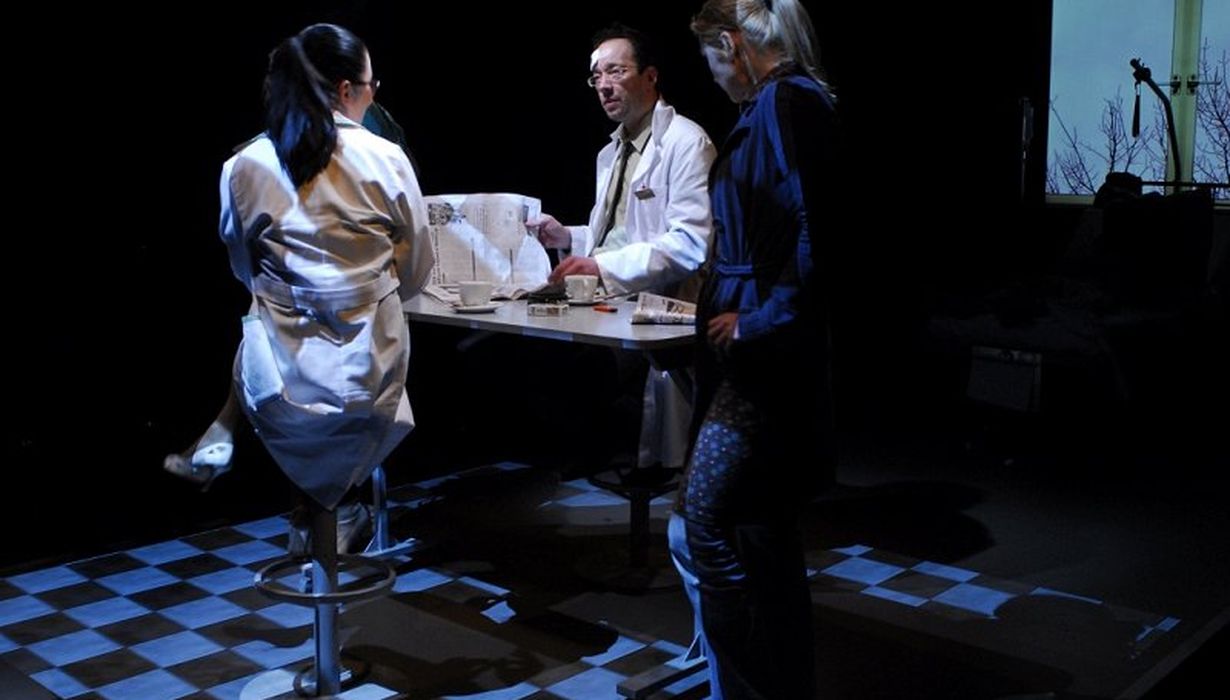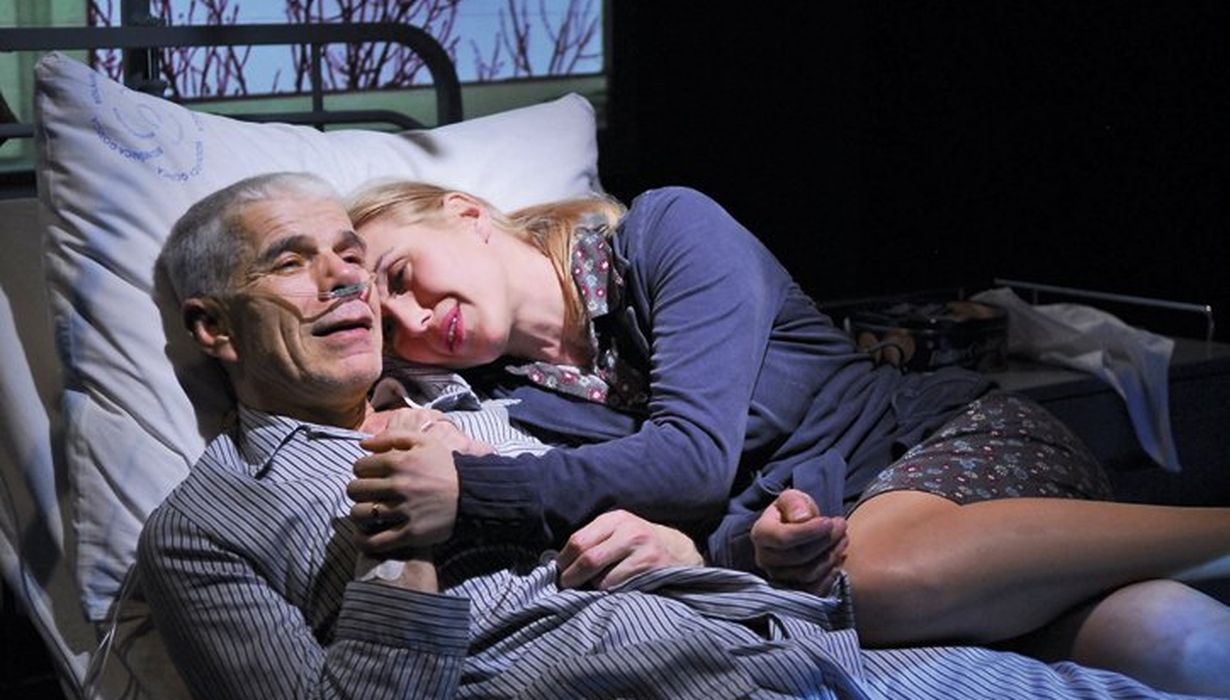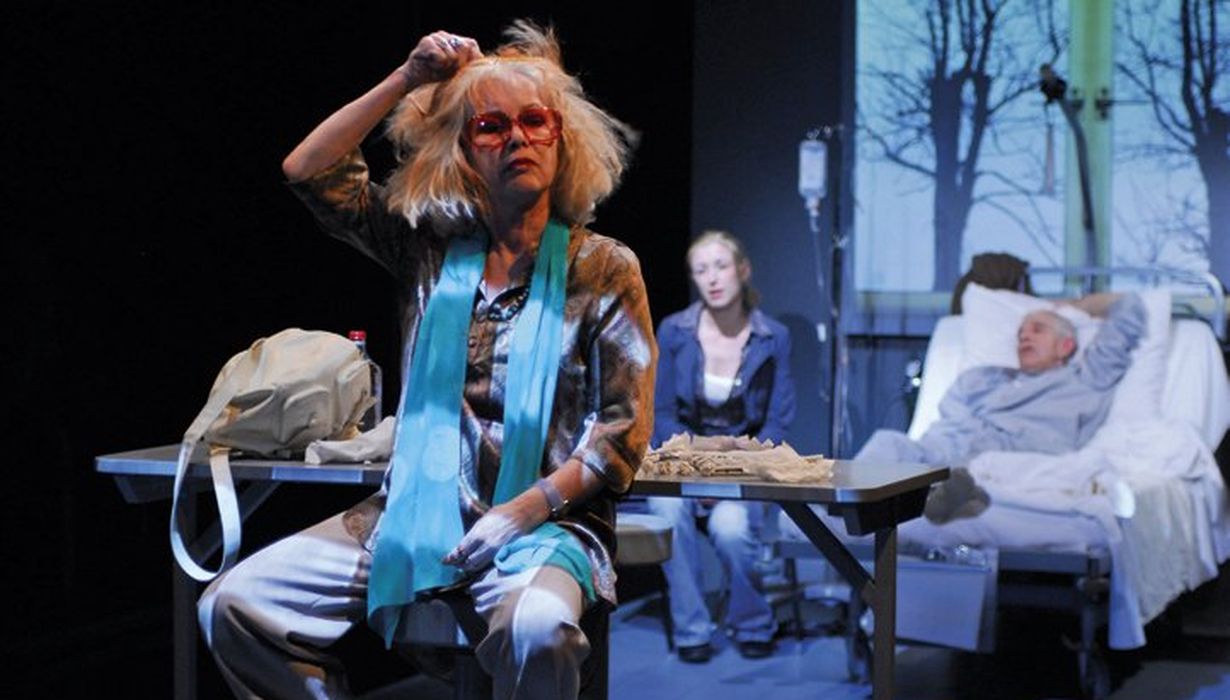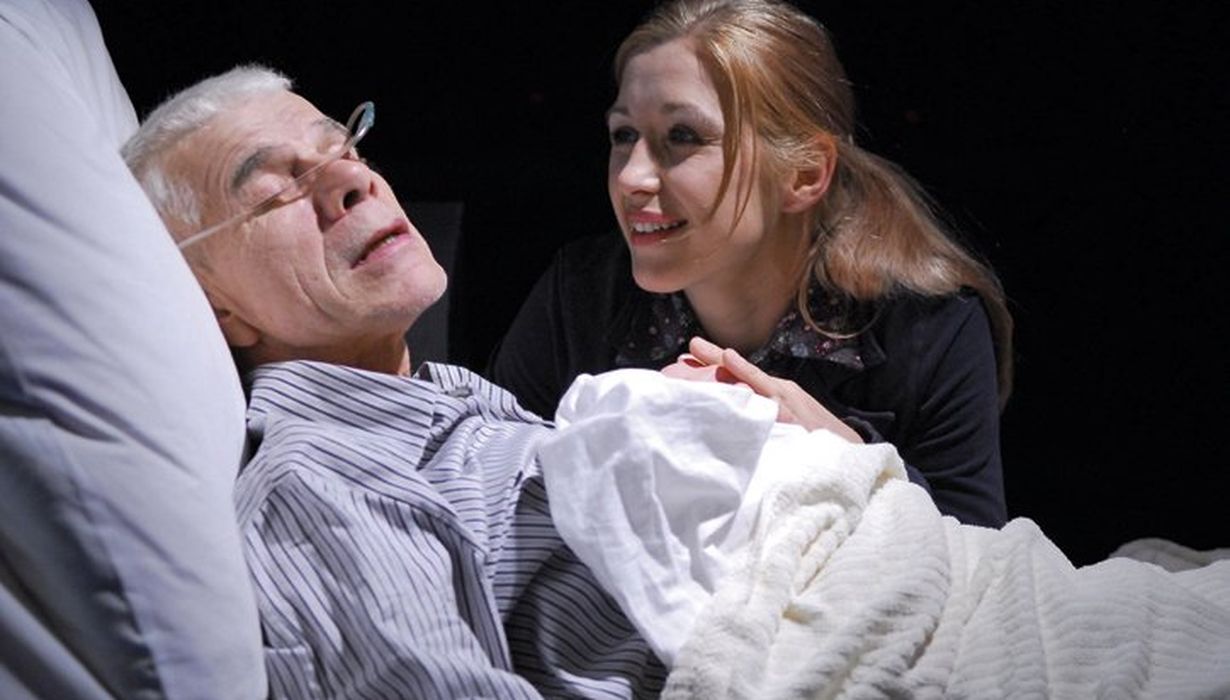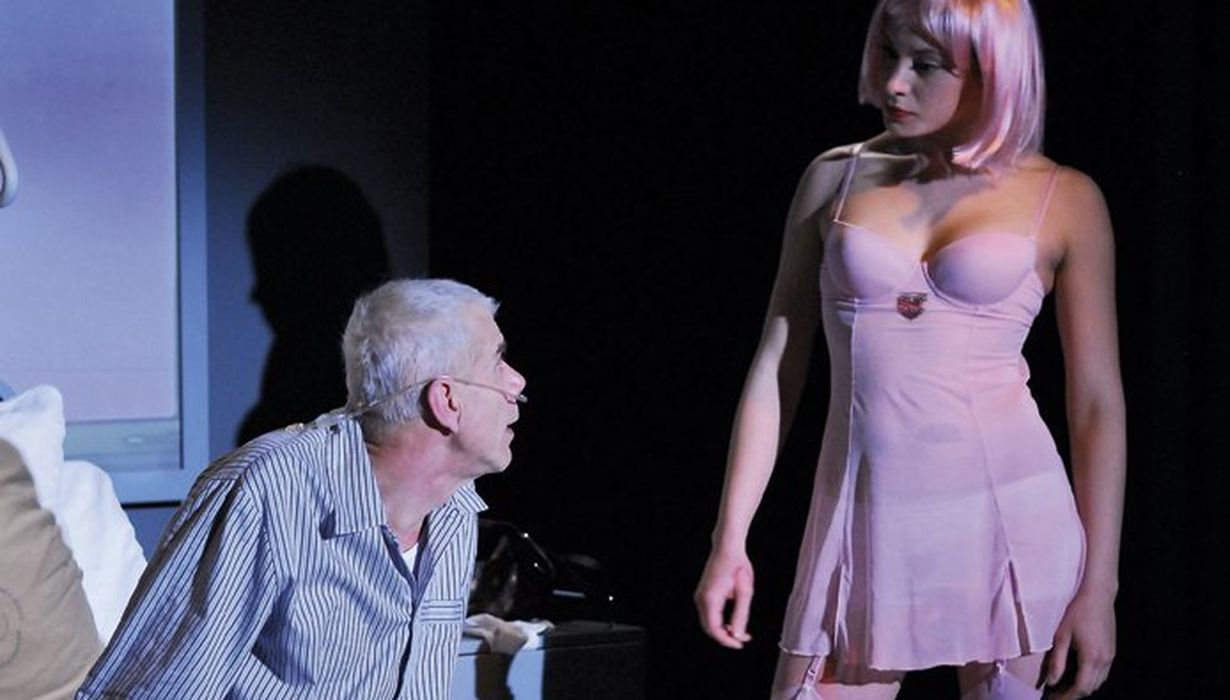This Bed is too Short or Just Fragments
This Bed is too Short or Just Fragments
A baptismal production
PREMIERE
1. marec 2007
Creators
-
Dramaturg
Alja Predan -
Director
Ivana Djilas -
Language Consultant
Srečko Fišer -
Set Designer
Branko Hojnik -
Costume Designer
Jelena Proković -
Video by
Nejc Saje -
Composer
Boštjan Gombač -
Light Designer
Samo Oblokar
Performing
Irene
Helena PeršuhTom
Ivo BarišičPete
Radoš BolčinaSheila
Maja PoljanecMother
Teja GlažarSister
Marjuta SlamičDoctor
Miha NemecJournalist
Jože HrovatWhore
Medea Novak k. g. / Ajda Toman k. g.Undertaker
Blaž Valič
In the Media
This Bed Is Too Short or Just Fragments is in fact a hypertext in which time, space, action, characters and dialogues take turns without succession, in discrete film sequences. /…/Director Ivana Djilas used an inventive mise en scène to collate the fragmented actions into a wholesome organism. The passages between times and places are effortless, the simultaneous acting perfectly paced. The emotions and bits of text circulate in a fast, fluid rhythm and create a unified psychological space. Video and music effectively separate the spaces and nuance the feelings. The central position of the stage is an intelligent solution; the actors are present on both sides and the audience really inhales the intimacy of disclosure.
Lea Širok, RA Slovenija 1, 2 March 2007
A fragmentary structure of the text is almost ultimate on all the levels: on the story level we follow an almost incompatible relationship of a dying old man and a young woman, who bears a new life in her, on the level of dramatic topography the story oscillates between the extreme, claustrophobically closed interiors of a hospital or a lavatory to the public places, such as a dilapidated city bar. Chronologically it is not only mixing the scene sequences, but also the fact that the present is constantly evolving through the language of the past, which abruptly enters the present of the characters, taking shape of innumerable fears of what is yet to come. The insecurity, experience, which in the time of human loss – not only of the other, but also of self – governs our space and time more and more, thus permeates the entire dramaturgy of the play an is the element, which binds the contradictory elements into a dramatic text. Director Ivana Djilas, helped by the stage designer Branko Hojnik, formed a central stage, shaped as a rail, almost a kind of a walking path : the actors step on it from the auditorium and return the same way. Thus the director extended the open dramatic structure and the dual conflict onto the level of a theatre event, making it simultaneously a line of division and unavoidable connection between the actors and the audience. She accentuated the bipolarity of the dramatic structure even further by placing it on the ends of the scene and by using video as an additional commentary of the action. A relatively large cast, which did not seem out of place on this minimalist, chamber set for even one moment due to the extremely well thought-through mise en scène managed to create – despite complex dramaturgy – a spectre of vivacious characters, full of spirit and brio.
Ignacija J. Fridl, Dnevnik, 5 March 2007
Ivo Barišič masterfully extracts the dying humanness and warmth from his character, who keeps escaping into acerbic cynicism because his fear of dying. He knows that medicine can no longer help him. Even more, it treats his dying with "professional" coldness. Bursts of black humour are interspersed with all kinds of intimate stories which have only one message: life is here to be lived.
Andraž Gombač, Primorske novice, 5.3.2007.
Ivo Barišič is Tom; he seems to be partly taking the inspiration for his character – the physical, the bending – from the senile character he created in the Locusts, but here he is a lot less deteriorated and a lot more mischievous, even roguish. At times he is furious, when all the suppressed issues burst in the open, but also fearful of the final secret – these are moments when he is at his most gentle and sentimental. At all times, however, we are looking at a precise and well thought-through figure of a loveable old man, one who was made wiser by experience, slightly cunning and active as much as his strength will allow.
On the other side, there is Pet; Radoš Bolčina brings him to the edge of insanity and wild jealousy. He seems to be permanently in a sort of a spasm, he is insecure and envious, and then again a self-assured macho type, who has difficulties controlling his emotions. Between them is Irene (Helena Peršuh), somewhat passive and almost a victim of this chaos, this head-spinning and uncontrollable dance of other people’s expectations, capable of extraordinary grace and sentiments, yet at times almost distant, almost sequestered because of her helplessness …
The performance in Nova Gorica is intensive, well thought through and extremely effective; the directing found the way to endure the sometimes whirlwind pace and not lose the emotional charge of the script.
Matej Bogataj, Delo, 5 March 2007
With his skilful acting approach, Ivo Barišič presented the dying Tom without any kind of pathos, as a realistic character who can be acerbically witty about his illness and the approaching end, but at the same time doesn’t want to die. Helena Peršuh created Irene: at first she shielded her with passiveness, as a girl who is never sure of what she’s doing, and then changed her into a more thoughtful person, with a clearer view of the life in front of her. Teja Glažar drew a detailed image of the alcoholic mother and her debauchery with great acting energy.
Iva Koršič, Novi glas, 9 March 2007
Awards
On the 17th Days of Marulic at Split, April 2007:
- Award for the best director - Ivana Djilas
- Award for the best text - Nina Mitrović
- Award for the best scenography - Branko Hojnik
- Award for the best light design - Samo Oblokar
Festivals and performances abroad
On the 17th Days of Marulic at Split; the international festival of Croatian drama and theatre, April 2007



